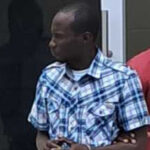Fifteen Palestinian paramedics and rescue workers, including at least one United Nations employee, were killed by Israeli forces “one by one” and buried in a mass grave eight days ago in southern Gaza, the UN has said.
According to the UN humanitarian affairs office (Ocha), the Palestinian Red Crescent (PRCS) and civil defence workers were on a mission to rescue colleagues who had been shot at earlier in the day, when their clearly marked vehicles came under heavy Israeli fire in Rafah city’s Tel al-Sultan district. A Red Crescent official in Gaza said that there was evidence of at least one person being detained and killed, as the body of one of the dead had been found with his hands tied.
The shootings happened on 23 March, one day into the renewed Israeli offensive in the area close to the Egyptian border. Another Red Crescent worker on the mission is reported missing.
“Seven days ago, civil defence and PRCS ambulances arrived at the scene,” the head of Ocha in Palestine, Jonathan Whittall, said in a video statement. “One by one, [the paramedics and civil defense workers] were hit, they were struck. Their bodies were gathered and buried in this mass grave.
“We’re digging them out in their uniforms, with their gloves on. They were here to save lives. Instead, they ended up in a mass grave,” Whittall said. “These ambulances have been buried in the sand. There’s a UN vehicle here, buried in the sand. A bulldozer – Israeli forces bulldozer – has buried them.”
Philippe Lazzarini, the head of the UN relief agency for Palestinian refugees, Unrwa, said that one of its employees was among the dead found in Rafah.
“The body of our colleague killed in Rafah was retrieved yesterday, together with the aid workers from [the Palestinian Red Crescent] – all of them discarded in shallow graves – a profound violation of human dignity,” Lazzarini wrote in a social media post.
Israel’s military said its “initial assessment” of the incident had found that its troops had opened fire on several vehicles “advancing suspiciously toward IDF troops without headlights or emergency signals”.
It added that the movement of the vehicle had not been coordinated with the Israel Defense Forces (IDF) in advance, and that the area was an “active combat zone”. The Red Crescent said the Tel al-Sultan district had been considered safe, and movement there was normal, “requiring no coordination”.
On Monday the IDF issued evacuation orders covering most of Rafah, indicating it could soon launch another major ground operation, eight days after the paramedics and rescue workers were killed.
The IDF did not reply on Monday to a request for comment on the reports that the paramedics and rescue workers had been buried in a mass grave at the scene of the shooting. It earlier claimed to have killed nine militants from Hamas and Palestinian Islamic Jihad on 23 March, but its statement did not make clear whether it was alleging the militants had been in the Red Crescent ambulances, or had been hit by an airstrike on Rafah earlier in the night.
According to the Red Crescent, an ambulance was dispatched to pick up the casualties from the airstrike in the early hours of 23 March and called for a support ambulance. The first ambulance arrived at hospital safely but contact was lost with the support ambulance at 3.30am. An initial report from the scene said it had been shot at and the two paramedics inside had been killed.
A convoy of five vehicles, including ambulances, civil defence trucks and two cars from the health ministry, were sent to retrieve the bodies. That convoy then came under fire, and the Red Crescent said most of the dead were from that attack. Eight of the dead were from the Red Crescent, six from civil defence and one was a UN employee.
Dr Bashar Murad, the Red Crescent’s director of health programmes, said one of the paramedics in the convoy had been on a call to his colleagues at the ambulance station when the attack took place.
“He informed us that he was injured and requested assistance, and that another person was also injured,” Murad said. “A few minutes later, during the call, we heard the sound of Israeli soldiers arriving at the location, speaking in Hebrew. The conversation was about gathering the team, with statements like: ‘Gather them at the wall and bring some restraints to tie them.’ This indicated that a large number of the medical staff were still alive.”
The Palestinian Red Crescent president, Younis al-Khatib, said the IDF had impeded the collection of the bodies for several days. The IDF said it had facilitated the evacuation of bodies as soon as “operational circumstances” allowed.
“The bodies were recovered with difficulty as they were buried in the sand, with some showing signs of decomposition,” the Red Crescent said.
Their burial had been put off pending autopsies, Murad said. “What is certain and very clear is that they were shot in the upper parts of their bodies, then gathered in a hole one on top of another, with sand thrown over them and buried,” he said. He said the body of one of the victims was recovered from the grave with his hands still tied. The claim could not be independently confirmed.
Whittall described the mission to recover the bodies as fraught. “While travelling to the area on the fifth day we encountered hundreds of civilians fleeing under gunfire,” he said. “We witnessed a woman shot in the back of the head. When a young man tried to retrieve her, he too was shot. We were able to recover her body using our UN vehicle.”
“It’s absolute horror what has happened here,” he added. “This should never happen. healthcare workers should never be a target.”
Jens Lærke, an Ocha spokesperson in Geneva, said: “The available information indicates that the first team was killed by Israeli forces on 23 March, and that other emergency and aid crews were struck one after another over several hours as they searched for their missing colleagues.
“They were buried under the sand, alongside their wrecked emergency vehicles – clearly marked ambulances, a fire truck and a UN car.”
The Red Crescent named the employees killed on 23 March as Mustafa Khafaja, Ezzedine Shaat, Saleh Muammar, Rifaat Radwan, Mohammed Bahloul, Ashraf Abu Labda, Mohammed Hilieh, and Raed Al-Sharif. The incident was the single most deadly attack on Red Cross or Red Crescent workers anywhere since 2017, the IFRC said.
“I am heartbroken. These dedicated ambulance workers were responding to wounded people. They were humanitarians,” said the IFRC secretary general, Jagan Chapagain. “They wore emblems that should have protected them; their ambulances were clearly marked.”
According to the United Nations, at least 1,060 healthcare workers have been killed in the 18 months since Israel launched its offensive in Gaza. That began after Hamas fighters stormed communities in southern Israel on 7 October 2023, killing 1,200 people. The global body is reducing its international staff in Gaza by a third owing to staff safety concerns.
SOURCE: The Guardian
The post Israeli troops killed 15 Palestinian medics and buried them in a mass grave, UN says appeared first on Barbados Today.


